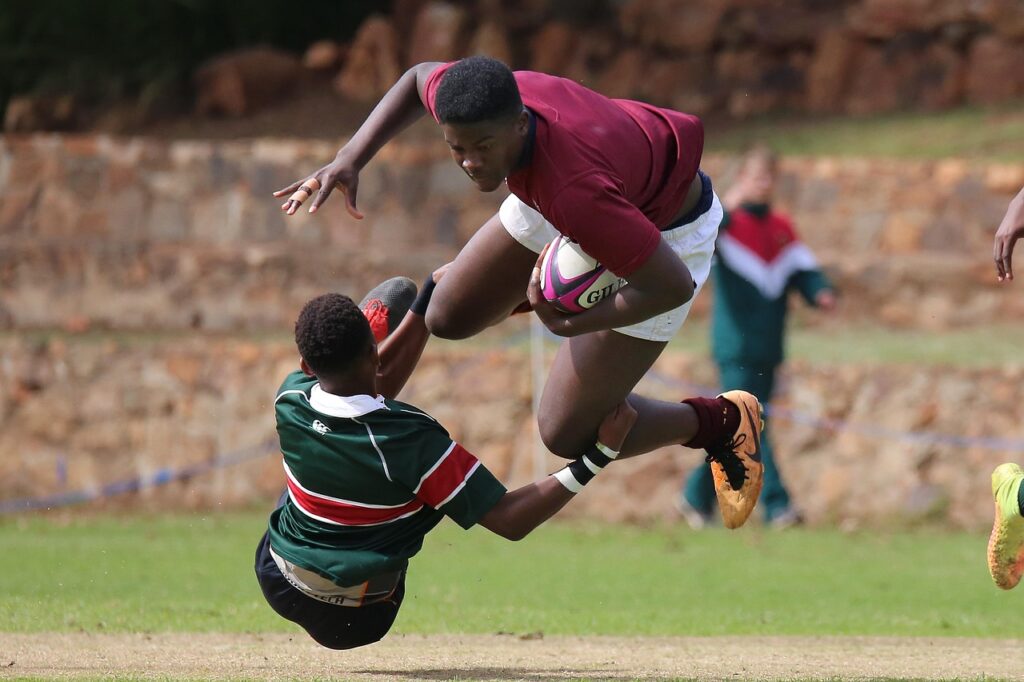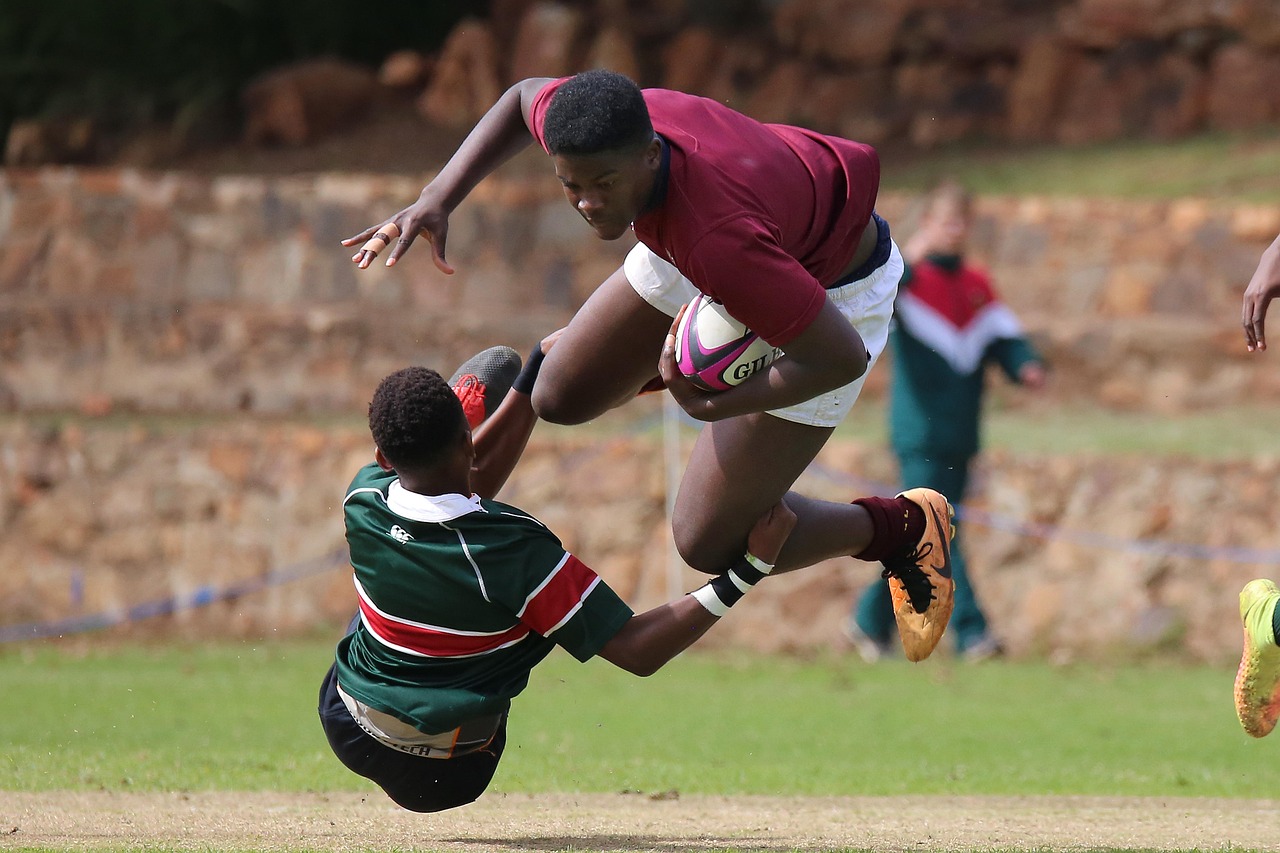Rugby is a fast-paced, physical sport that demands strength, strategy, and quick thinking. Players often face split-second decisions on the pitch, dodging tackles and breaking through defenses to score. One question that frequently pops up, especially among newer players and fans, is: Can you hurdle in rugby? It’s a move seen in other sports like American football or track and field, but does it have a place in rugby union or rugby league?
This article dives into the official rules, explores the risks of hurdling, and offers safer alternatives for evading defenders. Whether you’re a player, coach, or fan, understanding the nuances of this topic will enhance your appreciation of rugby’s complex rulebook and safety priorities.
Hurdling—jumping over an opponent’s tackle—seems like a flashy way to keep the ball in play, but rugby’s governing bodies, like World Rugby, have strict regulations to ensure player safety. Let’s break down the facts, backed by official rules and insights from the rugby community, to answer whether hurdling is allowed and why it’s a controversial topic.
What Is Hurdling in Rugby?

Hurdling in rugby refers to a player jumping over an opponent who is attempting to tackle them, typically by diving or crouching low. The move is often associated with high-speed breaks where a ball carrier tries to avoid contact while maintaining possession.
Picture a winger sprinting down the sideline, spotting a tackler diving at their legs, and leaping over them to keep running. It sounds thrilling, but is it legal? In sports like American football, hurdling is occasionally seen and permitted in specific contexts.
However, rugby’s physicality and emphasis on controlled contact make hurdling a gray area. To understand its place in rugby, we need to look at the official laws set by World Rugby, the governing body for rugby union, and the Rugby Football League for rugby league.
Can You Hurdle in Rugby? Official Rugby Rules on Hurdling
Lets look at the rules relating to hurdling for various bodies.
Rugby Union: World Rugby Laws
According to World Rugby’s Laws of the Game, specifically Law 9 (Tackling), the rules prioritize player safety and fair play. While hurdling isn’t explicitly mentioned in the rulebook, actions that endanger players—such as jumping into a tackle—fall under Law 9.13, which prohibits dangerous play. This includes “tackling or attempting to tackle an opponent above the line of the shoulders” or engaging in reckless actions that could cause injury.
Hurdling often involves a player leaping into the air, which can lead to dangerous situations. For example:
- Risk to the tackler: A diving tackler could collide with the hurdler’s legs or body, risking head or neck injuries.
- Risk to the ball carrier: Jumping increases the chance of an awkward landing, potentially causing sprains, fractures, or concussions.
Referees may penalize hurdling as dangerous play, especially if the action is deemed reckless or likely to cause injury. In practice, referees interpret hurdling on a case-by-case basis, but most discourage it due to safety concerns.
Rugby League: RFL Regulations
In rugby league, governed by the Rugby Football League, the rules are similarly stringent. The RFL’s Laws emphasize safe tackling and prohibit actions that could harm players. Hurdling is not explicitly banned but is often penalized under dangerous play provisions, particularly if the jumper’s actions put the tackler or themselves at risk.
For instance, a 2019 incident in the Super League saw a player penalized for attempting to hurdle a tackler, with the referee citing safety concerns. This precedent suggests that hurdling is frowned upon in professional rugby league settings.
Key Takeaway
While neither rugby union nor rugby league explicitly bans hurdling, it’s generally considered dangerous and is likely to result in a penalty.
Referees prioritize player safety, and jumping over a tackler often violates this principle. For clarity, consult World Rugby’s safety guidelines or discuss with your coach to understand how local leagues enforce these rules.
Risks of Hurdling in Rugby
Hurdling may look like a clever way to evade a tackle, but it comes with significant risks. Here are the key dangers associated with attempting to hurdle in rugby:
- Injury to the Ball Carrier: Jumping increases the likelihood of an uncontrolled fall. Landing awkwardly can lead to sprained ankles, knee injuries, or even concussions if the player hits the ground head-first. According to a study on rugby injuries, over 30% of rugby injuries occur during tackles, and adding a jump heightens the risk.
- Injury to the Tackler: A tackler diving at the legs expects contact at ground level. If the ball carrier hurdles, the tackler may collide with the jumper’s body or land awkwardly, risking head, neck, or spinal injuries.
- Penalties and Game Impact: Even if no injury occurs, hurdling often results in a penalty, stopping play and potentially costing your team possession or points. In high-stakes matches, this could be a game-changer.
- Perception of Recklessness: Coaches and referees may view hurdling as a reckless move, potentially affecting a player’s reputation or playing time.
Given these risks, most coaches discourage hurdling and focus on teaching safer techniques to evade tackles. Let’s explore those alternatives next.
Alternatives to Hurdling in Rugby
Instead of risking a penalty or injury by hurdling, players can use safer, more effective techniques to avoid tackles. Here are some alternatives recommended by rugby coaches and backed by World Rugby’s coaching resources:
- Sidestep: A quick change of direction can throw off a tackler. By shifting weight to one side and then moving to the other, players can evade contact without leaving the ground.
- Swerve: A subtle curve in your running path can make it harder for tacklers to predict your movement, keeping you in control.
- Fend-Off (Hand-Off): Using a strong arm to push away a tackler is a common and legal technique in both rugby union and rugby league. It requires strength and timing but is safer than jumping.
- Goose Step: Popularized by players like David Campese, this technique involves a sudden change in stride to confuse the tackler, allowing the ball carrier to slip past.
- Dummy Pass: Faking a pass can freeze a defender, giving the ball carrier a split second to change direction or accelerate.
These techniques align with rugby’s emphasis on skill and strategy over risky maneuvers. Practicing them in training, as outlined in Rugby Coaching 101, can make you a more effective and safer player.
Why Hurdling Persists in Rugby Discussions
Despite the risks and penalties, the idea of hurdling persists in rugby conversations, especially among younger players or those inspired by highlight reels.
Social media platforms like X often feature clips of players attempting flashy moves, including hurdling, which can spark debates about their legality. A quick search on X reveals fans praising the athleticism of such moves but also questioning their safety and practicality.
One reason hurdling remains a topic is its rarity. When executed successfully, it’s a crowd-pleaser, making it a tempting move for players looking to stand out. However, professional players and coaches emphasize that rugby rewards teamwork and strategy over individual heroics. As one X post from a rugby coach noted, “Hurdling looks cool, but it’s a one-way ticket to the sin bin or the hospital.”
Another factor is the influence of other sports. Fans of American football or athletics may assume hurdling is equally viable in rugby, leading to confusion about the rules. Education is key—players must understand that rugby’s physicality demands safer, more controlled movements.
Insights from Rugby Experts
To add depth to this discussion, we looked at insights from rugby experts and former players. According to Brian Moore, a former England rugby player, rugby’s laws evolve to prioritize safety, and moves like hurdling are increasingly scrutinized. Moore argues that while athleticism is celebrated, reckless actions undermine the sport’s core values of discipline and teamwork.
Coaches also weigh in. In a Rugby Coach Weekly article, a top-level coach emphasized teaching evasion techniques over risky jumps. “Hurdling might work once, but it’s not a sustainable skill. Focus on footwork and decision-making,” the coach advised.
These perspectives highlight why hurdling is rare at professional levels. Instead, elite players rely on agility, strength, and game awareness to outmaneuver opponents.
FAQs: Common Questions About Hurdling in Rugby
Is hurdling legal in rugby?
Hurdling isn’t explicitly banned in rugby union or rugby league, but it’s often penalized as dangerous play under World Rugby’s Law 9.13 or RFL regulations. Referees have discretion to issue penalties based on the situation.
Has anyone successfully hurdled in a professional rugby match?
While rare, there have been instances of hurdling in lower-level or amateur matches. In professional rugby, such moves are typically penalized due to safety concerns.
What are the penalties for hurdling in rugby?
A hurdling attempt deemed dangerous can result in a penalty kick, free kick, or even a yellow card, depending on the severity. Repeated offenses may lead to a red card.
Are there sports where hurdling is allowed?
Yes, hurdling is permitted in sports like American football in specific contexts, but rugby’s rules are stricter due to the sport’s physical nature.
How can I avoid tackles without hurdling?
Techniques like sidestepping, swerving, fending off, or using a dummy pass are safer and legal ways to evade tacklers in rugby.
Conclusion: Play Smart, Stay Safe
So, can you hurdle in rugby? Technically, it’s not explicitly banned, but it’s heavily discouraged due to safety risks and the likelihood of penalties. Rugby’s governing bodies, including World Rugby and the RFL, prioritize player welfare, and hurdling often falls under dangerous play regulations.
Instead of risking injury or a referee’s whistle, players should focus on safer evasion techniques like sidesteps, fends, or swerves, which are not only legal but also more effective in the long run.
Whether you’re a player looking to improve your skills or a fan curious about rugby’s rules, understanding the nuances of hurdling can deepen your appreciation for the sport. Have you seen a hurdling attempt in a match, or do you have thoughts on rugby’s safety rules? Share your comments below, and check out our other rugby guides for more tips on mastering the game!
Share this post with your teammates and let us know your thoughts!
